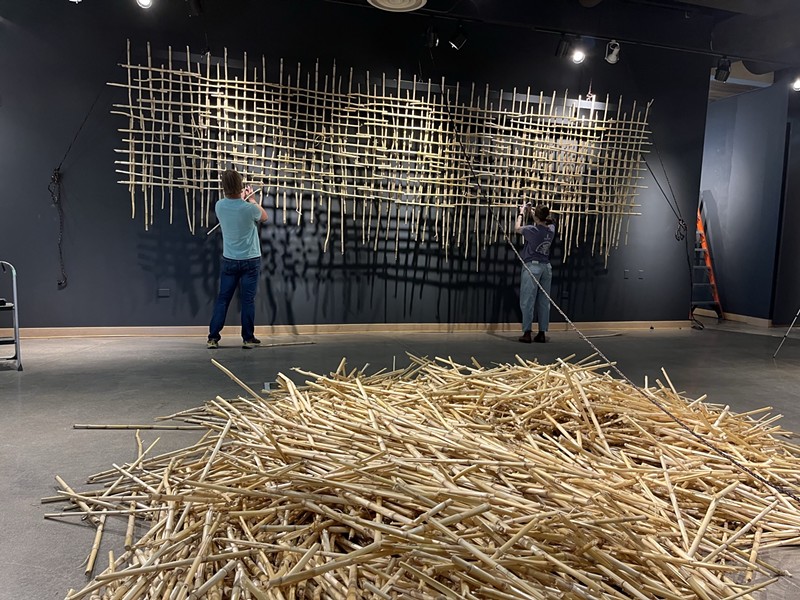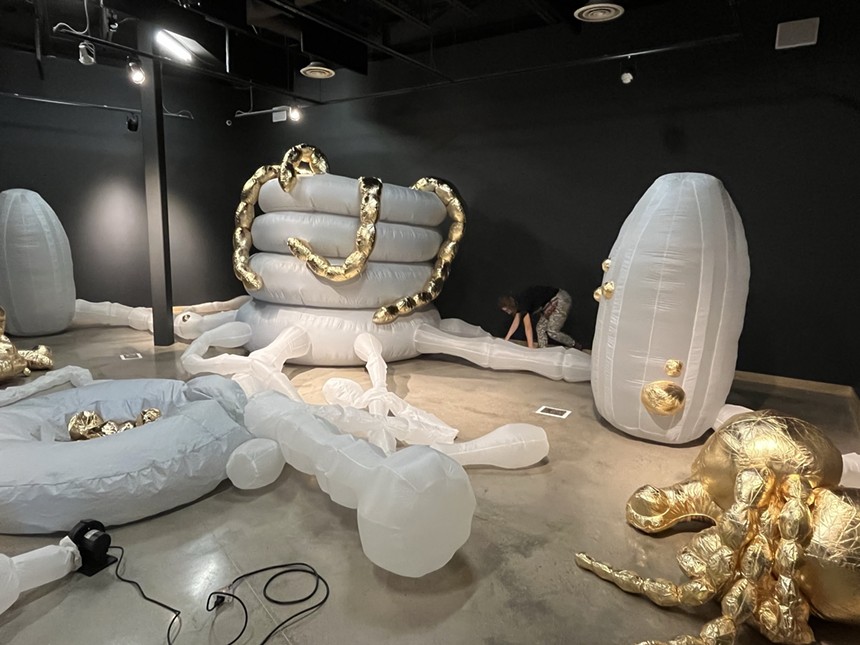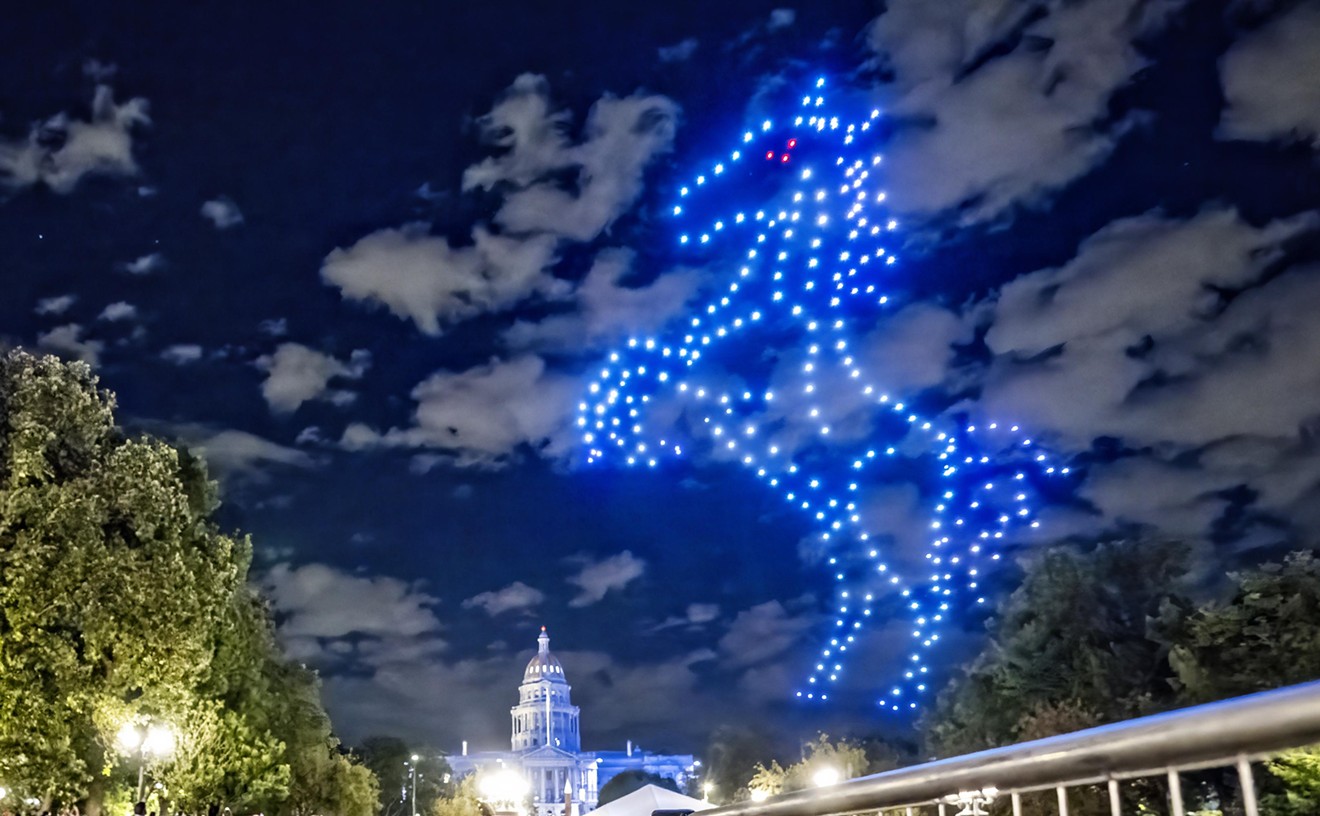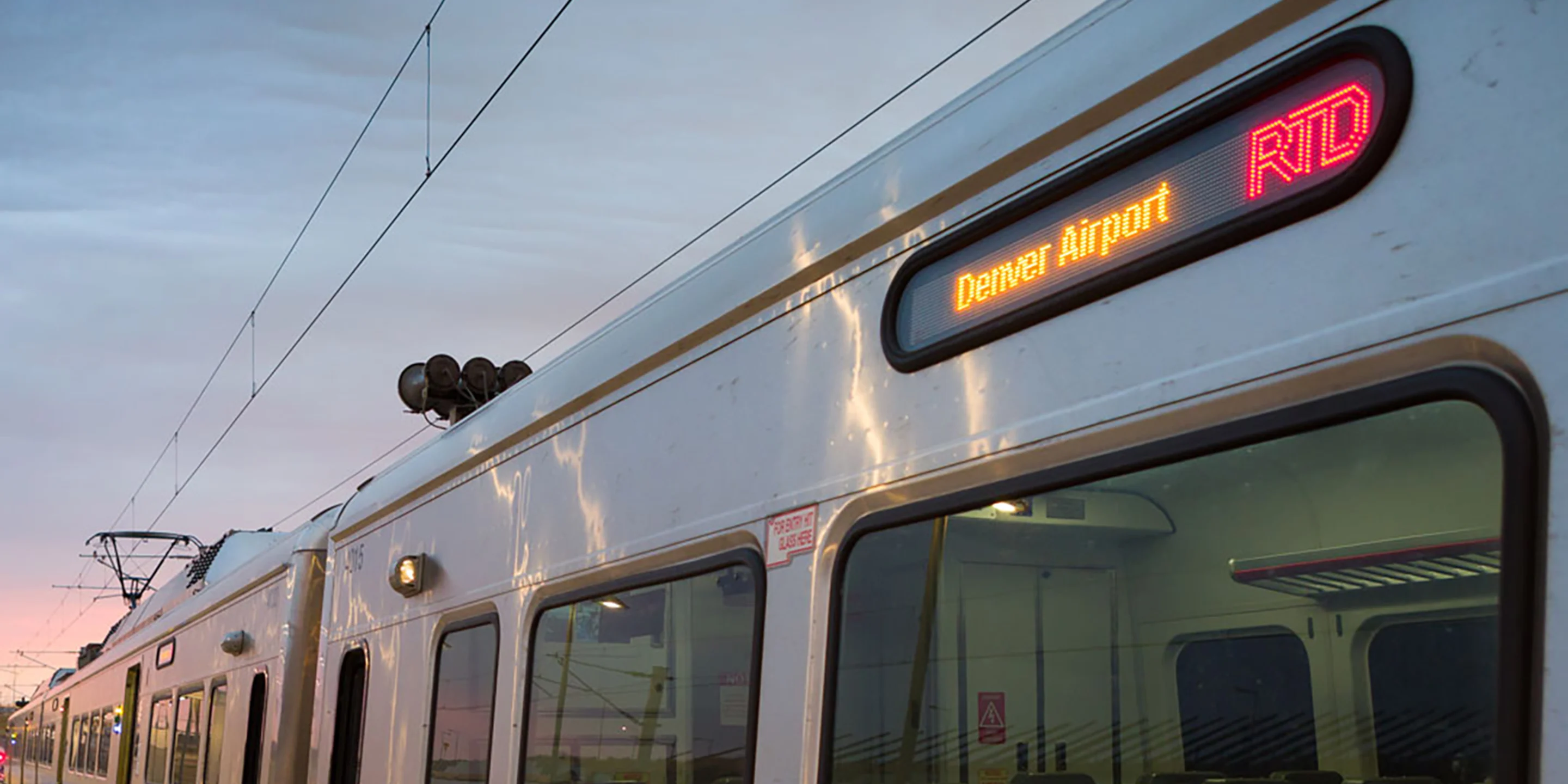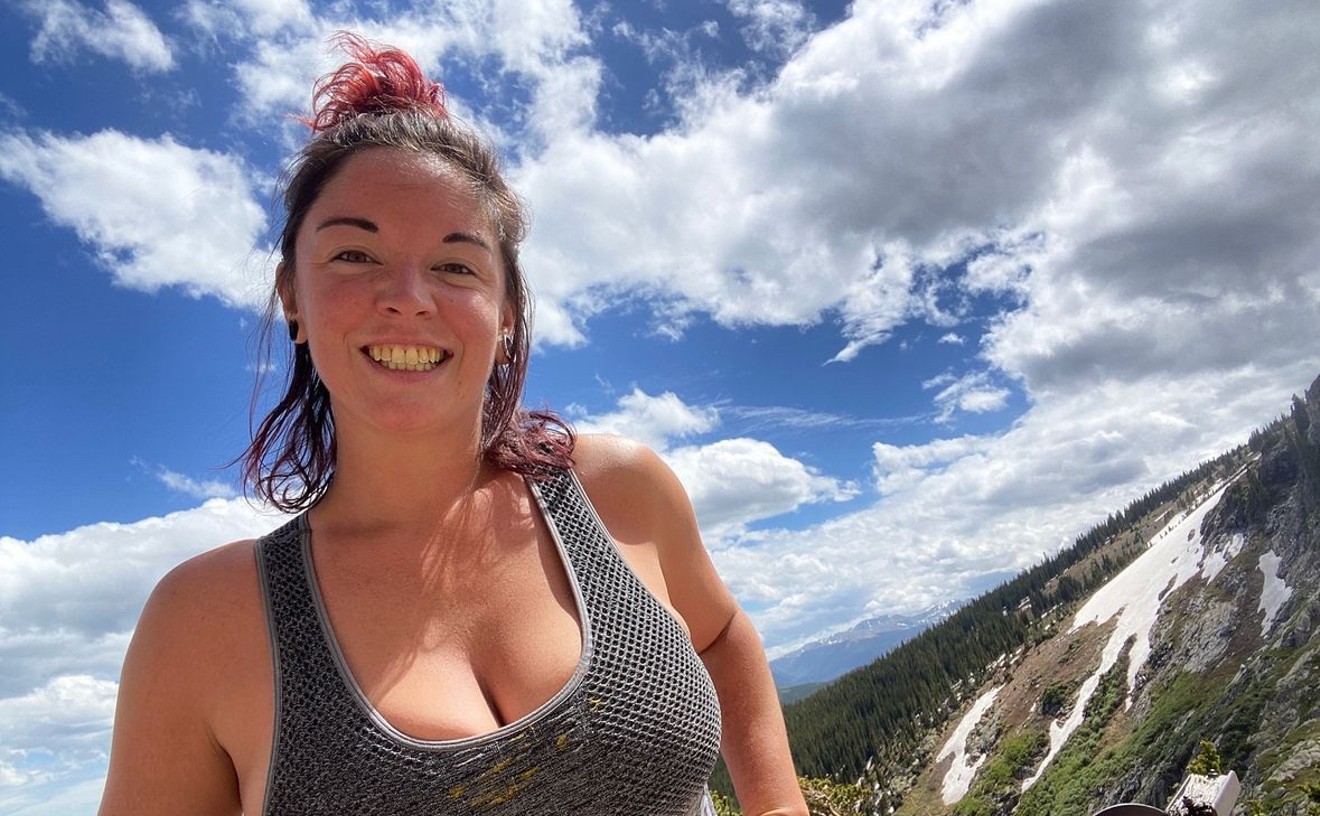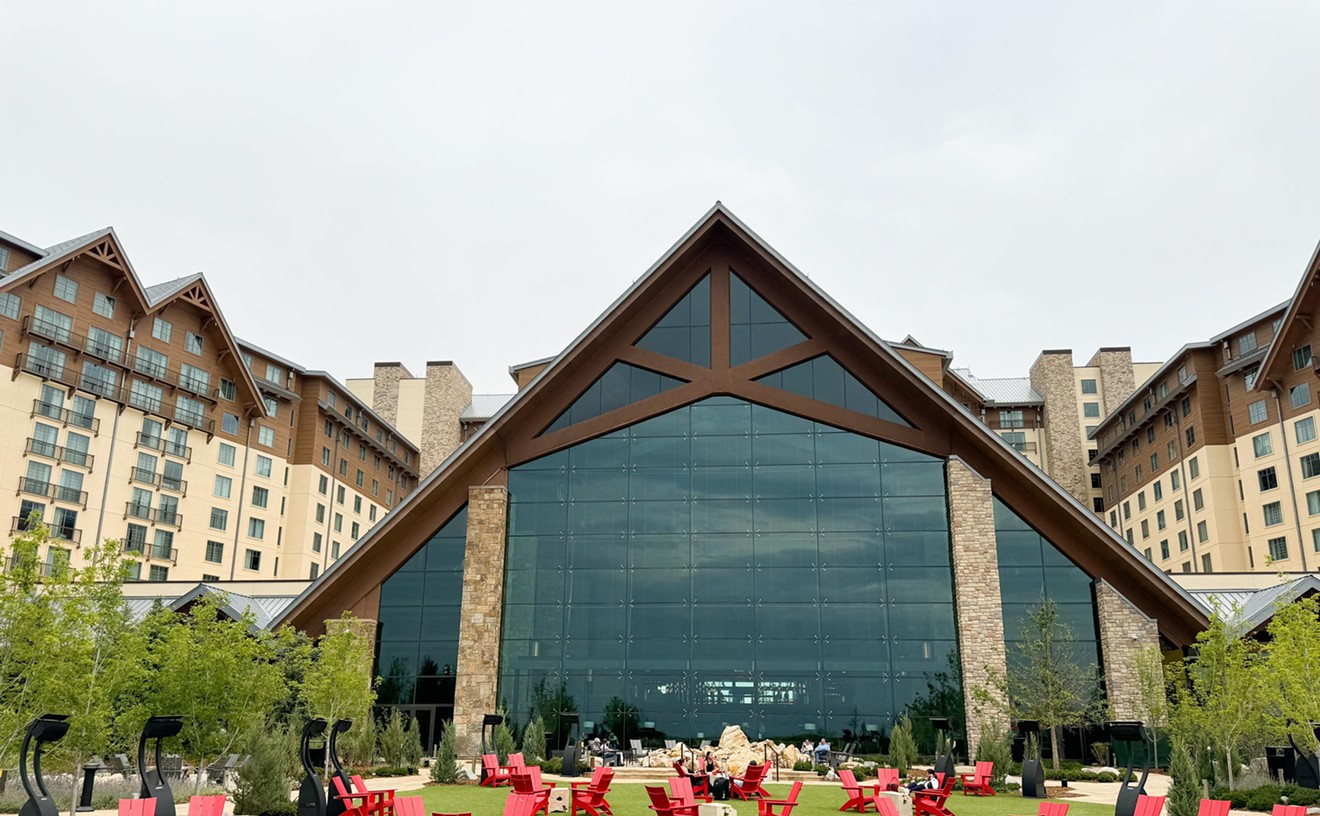“He had the idea of pairing artists with farmers, with a lead curator providing the grounding vision. That’s what they charged me with,” Kopke explains. It was a team venture from the beginning, with Dadone, then-BMoCA curator Pam Meadows (Jane Burke took over when she was hired last year) and Longmont Museum curator Jared Thompson working together.
The result of that new curational relationship is agriCULTURE, a sprawling exhibition scenario including fifteen artists and collectives, fifteen farms, two group museum shows and additional site-specific installations at three farm locations in Boulder County.
The exhibition opened June 8 at BMoCA, with a reception in Longmont on June 9; public farm events will roll out over the summer. And even as the curators prepare to unveil all of agriCULTURE’s elements, the work continues to evolve as nature takes control.
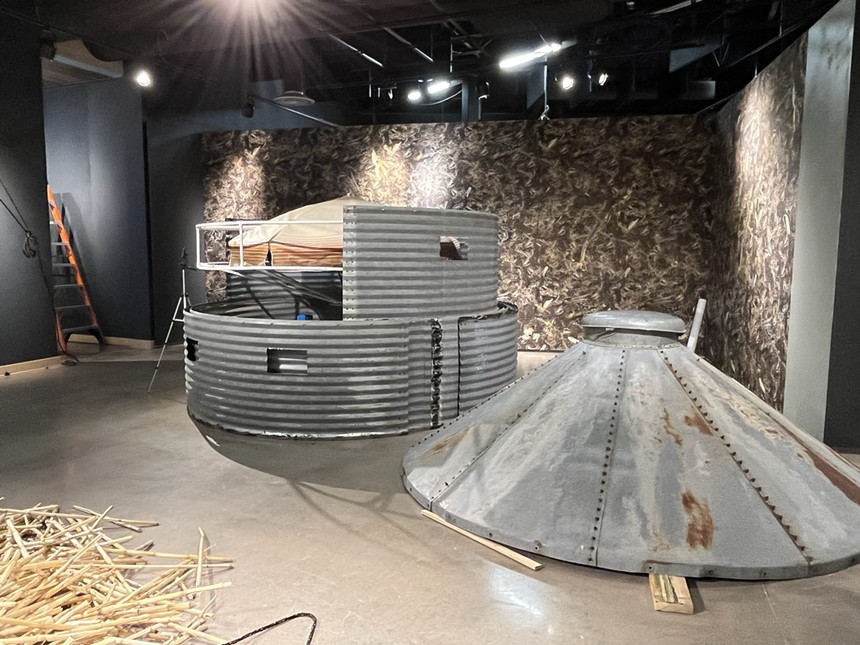
Libby Barbee collaborated with the Golden Hoof Farm, which practices Slow Food methods to raise animals and vegetables.
Courtesy Longmont Museum
“For me, farmers have an intimate connection with the land, providing a beautiful gateway for artists and visitors to access and think about their own connection to the land,” she continues. “Each pair went on a journey of phone calls and visits; some worked or camped on the farm, and others felt it was important to experience one entire growing season. We left the particulars to be open for artists to explore stories shared with farmers.”
The pairing of artists and farmers took some cultivation. “In the very beginning, the two other curators sent out surveys, kind of like a dating app," Kopke explains. "As the profiles came in, we started to see some natural affinities.”
For example, Mark Guttridge of Ollin Farms in Longmont, a grower concerned with esoteric soil health — an organic-farming principle about creating more abundant growing soil through organic enrichment — seemed a perfect match with artist Nicole Banowetz, who creates monumental inflatable sculptures of microscopic organisms. “They were like Willy Wonka's Farm Factory," Kopke quips. “They were the right pair.”
Kopke concentrated on coordinating the direct artist-farmer projects. “Each collaboration between an artist and a farmer was so deep and rich,” she says, bringing to light the “peripheral things — like the resurgence of local food and home gardening and the aesthetics of farm life.”
Several themes pop up in the pairings. “Many of the artists have a natural affinity for working with land or a concern around what’s happening in the natural world as a central piece,” Kopke says. “Other topics include the history of farming in Boulder County. Some people touch on tech or personal heritage.
“One artist, Margarita Cabrera, is the first cousin of Kena Guttridge, the co-owner of Ollin Farms,” Kopke adds. “They grew up together in Mexico City. Each project has so many strands of a story, not just one lens.” For her project, Cabrera gathered more than sixty community members to make ceramic spoons last summer, which were used to shovel seeds donated by the participating MASA Seed Foundation. In part, it was a celebration of Cabrera's shared heritage with Guttridge, in addition to the farm’s missions of food accessibility, soil regeneration and pollination.
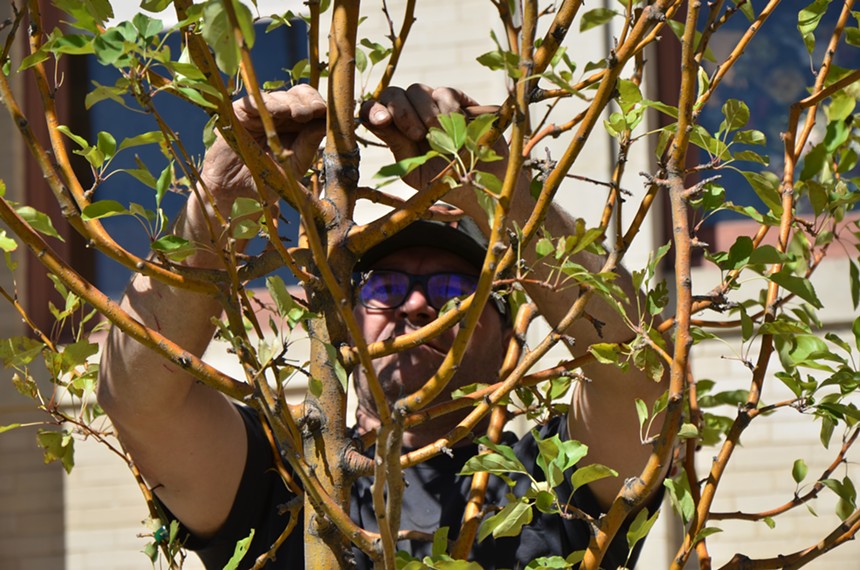
Sam Van Aken grafting multiple heritage apple varieties on one tree at the Agricultural Heritage Center in Longmont.
Photo: Jaime Kopke
He’s following the same path here, and calling it Tree of Forty Fruit Boulder. In the fall of 2021, he planted four Dolgo Crabapple base trees; the following spring, he grafted twenty to thirty heritage apple buds or branches collected in ditches and backyards along the Front Range. “They are all kinds and sizes of apple, from tiny crabapples to a big variety called 20 Ounce,” Kopke says. “It’s like seeing the history of America.”
But there were growing pains. “One time, the goats got out and ate all the bark off one apple tree, so now we’re down a tree — two years lost,” she says. But Van Aken replaced the tree to re-graft, and the project continues.
“What’s exciting about it for me is how it’s a big experiment,” Kopke adds. “We’re asking people to create specific projects, but some of them are still being worked, or we don't know the final outcome. Grafting has been a traditional technique for centuries, and it’s cool to think of it as a way to preserve dying varieties.”
Kopke recommends visiting many parts of the project exhibition to get the full impact. “There’s a ton of programming and activation days at each farm, plus events and workshops at BMoCA and Longmont,” she notes. “There are so many stories presented, every one a pathway to one’s relationship to the land and nature.
"Maybe you’re just looking for something inspired to do this summer.”
agriCulture is on view now at the Boulder Museum of Contemporary Art (BMoCA), 1750 13th Street, Boulder, through October 1. Admission is $2, and free on Wednesdays and Saturdays during the Boulder Farmers Market. The exhibition’s portion at the Longmont Museum, 400 Quail Road, Longmont, opens with a reception on Friday, June 9, from 6 to 8 p.m., and runs through January 7. Admission is $5 to $8 (members and children age three and under admitted free). Learn more about workshops and off-site farm activations here.

